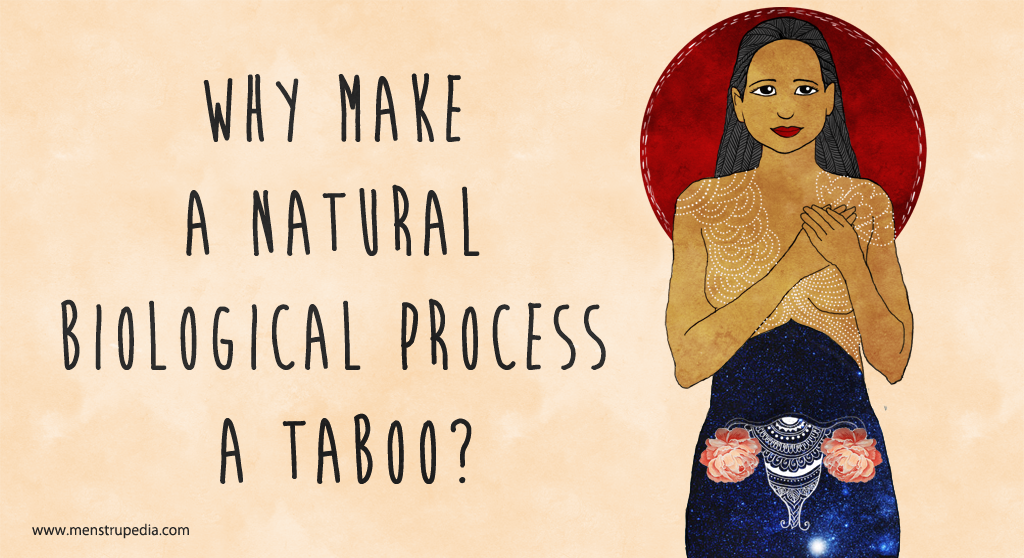Gender violence, though mostly brutally visible, also manifests itself in the most routine implicit acts. In the highly patriarchal society of India, with strict notions of purity and pollution, the routine biological process of menstruation takes on the dimension of a ‘curse’ that manifests itself in bleeding. Therefore, the issues associated with menstruation are never discussed openly, burdening young girls with archaic taboos and restrictions and even denying them basic hygiene and sanitation requirements during their monthly periods. This reinforces gender inequities and exclusion.
One of the worst examples of exclusion is seen in the regressive traditional practices of the Kadu Golla community of the Chitradurg District in Karnataka. This community considers a woman to be unclean when she has her monthly period or after she delivers a baby. Such women have to live outside the villages in derelict buildings or in hovels the size of a kennel with their newborns, without access to medical care or hygienic sanitation facilities. During this time, the women are not supposed to bathe or eat cooked food. The worst sufferers are young girls who compulsorily need to spend a few days away from school and college when they are menstruating even if it means that they miss their examinations.[1]
If you think that such archaic practices are limited only to the remote rural corners of India, then think again. According to Aakar Innovations, an NGO that works for the promotion of menstrual hygiene in India, 9 out of 10 women in India do not have access to hygienic and effective menstrual protection.[2] This means that in a country that boasts of about 8% economic growth, in the country that has even managed to send its mission to Mars, 9 out of 10 women are constrained by their own bodies every single month. According to India’s 2011 census, 89% of the nation’s rural population live in households that lack toilets. This absence of proper sanitation along with the unavailability of affordable sanitary materials for menstrual hygiene causes multiple psychological and physical health impacts. For instance, reproductive tract infections are 70% more common amongst women who useunhygienic materials during menstruation and an alarming 30% of girls drop out of school upon attaining puberty.[1]
The taboos and rituals around menstruation exclude women and girls from various aspects of social and cultural life. It has built a self-reinforcing vicious cycle of silence about the concerns of women, neglect of menstrual hygiene within development initiatives and a lack of participation of women in decision-making.
Despite such grim realities, menstrual hygiene management has been continuously neglected from programmes for community water, sanitation and hygiene promotion. It is not incorporated into infrastructural designs for toilets, environmental waste disposal policies and in training guidelines for health workers. For instance, the Swaccha Bharat Abhiyan, launched by the new government with much fanfare this year, recognizes the need for proper sanitation facilities and toilets, but remains silent on the requirements of menstrual hygiene services.[2]
In 2011, the Central Government made its first initiative for ensuring menstrual hygiene through the launch of the Scheme for Promotion of Menstrual Hygiene among Adolescent Girls in Rural Areas.[3]The scheme aims to increase awareness among adolescent girls about Menstrual Hygiene, increase access and use of high quality sanitary napkins by adolescent girls in rural areas and to ensure safe disposal of sanitary napkins in an environmentally friendly manner.[4] However, the positive impacts of the scheme are yet to be witnessed at the ground level.

Furthermore, the distribution of sanitary napkins, though a crucial part of the solution in a country where 70% of the girls cannot afford to buy hygienic sanitary products, is not the panacea for all its underlying ills and discrimination. Apart from addressing the practical and infrastructural needs of toilets and sanitary napkins, there is an urgent requirement to promote better awareness in order to overcome the embarrassment, cultural practices and taboos surrounding this biological process that lead to grave discrimination against women and girls.
In order to break these shackles of menstrual taboos that reproduce gender power relations and inequities, involving men and adolescent boys is of crucial significance. More often than not, men play an important role in the decision making regarding the provision of menstrual hygiene services as policy makers, headmasters, or even as the head of the family responsible for the decision to build say a toilet at home. Therefore, there is a crying need to sensitize men and more importantly, to break the silence around the issue of menstruation.
[1] ‘Unclean and Outcast’, August 11-24, 2012, Frontline
http://www.frontline.in/static/html/fl2916/stories/20120824291604000.htm
[1] http://yourstory.com/2014/09/aakar-innovations/
[1]‘Sanitation Protection: Every Woman’s Health Right’ , AC Neilsen
http://indiasanitationportal.org/19069
[1] Guidelines for Swaccha Bharat Abhiyan, Ministry of Drinking Water and Sanitation, Government of India
http://www.mdws.gov.in/sites/upload_files/ddws/files/pdfs/Final%20Guidelines%20(English).pdf
[1] National Health Mission, Government of India
[1] http://pib.nic.in/newsite/erelease.aspx?relid=62586
Originally published at the GRIT Prajnya Blog for the Prajnya 16 Days Campaign Against Gender Violence
Aparna Gupta is currently a fellow with PRS Legislative Research’s Legislative Assistants to Members of Parliament programme. A proud feminist and strong advocate for Human Rights, she is still trying to discover more domains to make a difference.
Editor: Divya Rasoline







